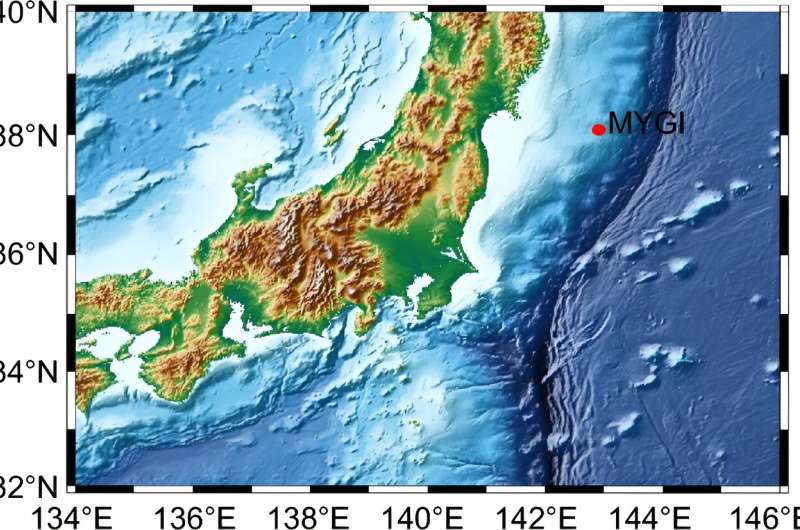This article has been reviewed according to Science X's editorial process and policies. Editors have highlighted the following attributes while ensuring the content's credibility:
fact-checked
proofread
Seafloor geodetic positioning model achieves centimeter-level precision

In a study published on 4 December 2023, in the journal Satellite Navigation, researchers from Chinese Academy of Surveying and Mapping have developed a self-structured Empirical SSP (SESSP) approach to overcome previous limitations. This novel method utilizes a three-parameter Empirical Temperature Profile (ETP) model, structured using Del Grosso's sound speed formula, to create an Empirical Sound Speed Profile (ESSP).
This novel method creates an ESSP, effectively circumventing the need for traditional, costly in-field SSP measurements. The SESSP approach is distinguished by its two-tiered optimization process: the first level stabilizes the ETP model parameters, while the second ensures high-precision positioning in relation to sound speed variations within the ESSP framework. This unique model enables the simultaneous estimation of both ESSP parameters and seafloor geodetic coordinates.
Central to the SESSP method is the use of a ray-tracing positioning model, enhanced by the integration of B-splines to accurately characterize acoustic delays caused by variations in sound speed. The approach's efficacy was rigorously tested through long-term seafloor geodetic array observations, confirming that the two-level optimization could match the positioning accuracy of traditional in-field SSP methods, with only minimal discrepancies in both horizontal and vertical coordinates.
This breakthrough in seafloor geodetic positioning methodology marks a paradigm shift, offering a more practical, cost-effective alternative for high-precision seafloor monitoring and vastly expanding the potential for global seafloor geodesy applications.
The SESSP model's success in providing centimeter-level precision in seafloor positioning holds great promise for various applications. It can significantly enhance the monitoring of tectonic movements and crustal deformations in submarine regions, leading to a better understanding and prediction of seismic activities.
In addition, this technology can be instrumental in oceanographic research, marine resource exploration, and environmental monitoring, offering a more comprehensive understanding of our planet's underwater landscapes.
More information: Shuqiang Xue et al, Centimeter-level-precision seafloor geodetic positioning model with self-structured empirical sound speed profile, Satellite Navigation (2023). DOI: 10.1186/s43020-023-00120-7
Provided by TranSpread




















